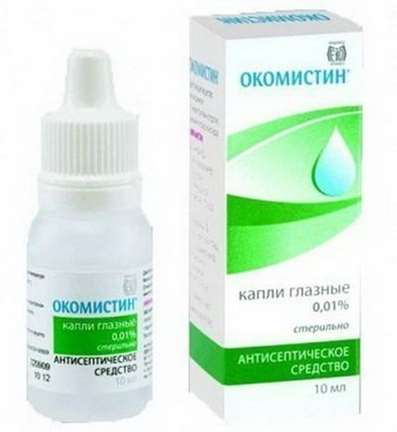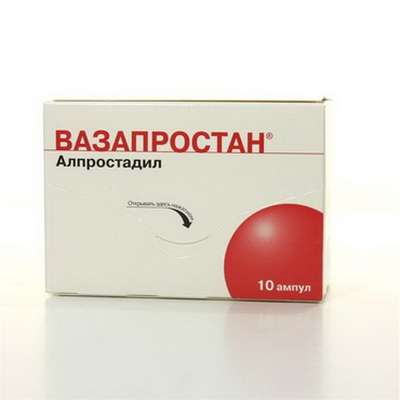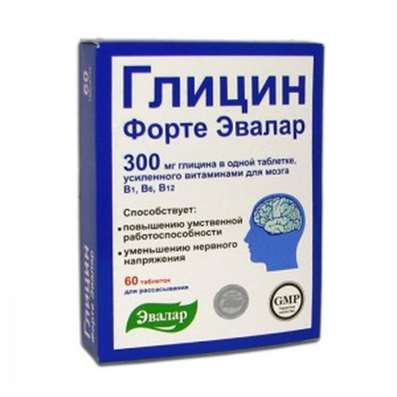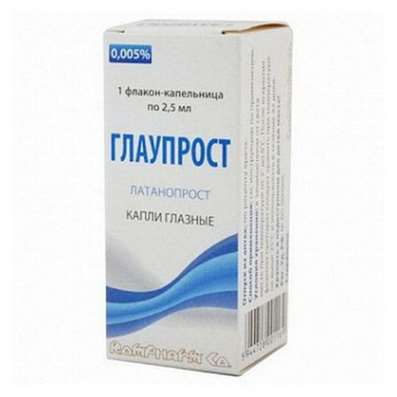Instruction for use: Cinacalcet (Cinacalcetum)
I want this, give me price
Pharmacological groups
Other hormones, their analogs and antagonists
Nosological classification (ICD-10)
C75.0 Malignant neoplasm of parathyroid [parathyroid] gland
E21.0 Primary Hyperparathyroidism
Osteodystrophy parathyroid
E21.1 Secondary hyperparathyroidism not elsewhere classified
Secondary Hyperparathyroidism
E83.5.0 * Hypercalcemia
Hypercalcemic crisis, Idiopathic hypercalcemia of newborns, Milk-alkaline syndrome
N18.0 Terminal stage of kidney damage
Terminal stage of renal failure
Code CAS 226256-56-0
Pharmacology
Pharmacological action - calcium-mimetic, reducing the level of parathyroid hormone.
Pharmacodynamics
Calcium-sensitive receptors on the surface of the main cells of the parathyroid glands are the main regulators of the secretion of parathyroid hormone (PTH). Tsienkalcet has a calcium mimetic effect that directly reduces the concentration of PTH, increasing the sensitivity of this receptor to extracellular calcium. Reduction in the concentration of PTH is accompanied by a decrease in the serum calcium level.
Reduction in the concentration of PTH correlates with the concentration of Cinacalcet .
After reaching the equilibrium state, the serum calcium concentration remains at a constant level throughout the interval between doses.
Secondary Hyperparathyroidism
Three clinical trials of 6 months (double-blind, placebo-controlled) included patients with terminal stage of renal failure (PDSS) on dialysis with an uncontrolled form of secondary hyperparathyroidism (1,136 patients).
The mean initial concentrations of intact PTH (ipTG) in the three clinical trials were 733 and 683 pg / mL (77.8 and 72.4 pmol / L) in the Cinacalcet and placebo groups, respectively, 66% of the patients took vitamin D before enrollment and more than 90% of patients took drugs that bind phosphate.
In patients receiving Cinacalcet , there was a significant reduction in the concentration of ipPH, calcium and phosphorus in the serum, calcium phosphorus product (Ca × P) compared to patients in the placebo group who received standard therapy. Reduction of the concentration of ipTG and Ca × P was maintained for 12 months of therapy. Cinacalcet reduced the concentration of IPPH, calcium and phosphorus and Ca × P irrespective of the initial values of the concentration of IPPG or Ca × P, the dialysis regime (peritoneal dialysis or hemodialysis), the duration of dialysis, and whether or not vitamin D. was used.
Reduction of PTH concentration was associated with a slight decrease in the concentration of bone metabolism markers (specific bone alkaline phosphatase, N-telopeptides, bone tissue renewal and bone fibrosis). In a retrospective analysis of the pool of data collected from the 6- and 12-month clinical trials using the Kaplan-Meier method, bone fracture and parathyroidectomy rates were lower in the Cinacalcet group compared to the control group.
Preliminary studies in patients with chronic kidney disease (CKD) and secondary hyperparathyroidism not on dialysis indicate that Cinacalcet et reduces PTH concentration in a similar manner as in patients with PDSS and secondary hyperparathyroidism who are on dialysis. However, for patients with renal insufficiency in the pre-dialysis stage, efficacy, safety, optimal doses and target values of therapy were not established. These studies have shown that in patients with CKD not on dialysis and receiving Cinacalcet e, there is a greater risk of developing hypocalcemia compared to patients with dialysis-mediated TSHD receiving Cinacalcet e, which may be due to a lower initial concentration of calcium and / or residual kidney function.
Primary hyperparathyroidism (GPT) and parathyroid carcinoma
227 patients with primary GPT or parathyroid carcinoma participated in a clinical study on the use of Cinacalcet . In patients with parathyroid carcinoma and with primary GPT, the mean calcium concentration decreased from 14.1 to 12.4 mg / dl (from 3.5 to 3.1 mmol / L) and from 12.7 to 10.4 mg / dL (from 3.2 to 2.6 mmol / l), respectively. In patients with primary GPT, including patients with recurrent primary GPT after parathyroidectomy, cinnacalcet normalized serum calcium concentration in approximately 80% of patients and maintained this value for 4.5 years. A significant number of patients with primary HTT who took Cinacalcet and met the criteria for parathyroidectomy based on the total serum calcium concentration> 11.3 mg / dL (2.82 mmol / L) and <12.5 mg / dL (3, 12 mmol / L), but not parathyroidectomy, the total serum calcium concentration was <10.3 mg / dL (2.57 mmol / L) and the total serum calcium concentration was reduced by> 1 mg / dL (0.25 mmol / l) compared with patients receiving placebo (75.8% compared with 0%, p <0.001 and 84.8% compared with 5.9%, p <0.001, respectively).
Pharmacokinetics
Suction. After oral administration of Cmax cinacalcet in blood plasma is achieved after about 2-6 hours. Absolute bioavailability of Cinacalcet at fasting, established on the basis of comparing the results of various studies, is approximately 20-25%. When taking Cinacalcet with food, its bioavailability increases by approximately 50-80%. Such an increase in the concentration of Cinacalcet in the blood plasma is observed regardless of the fat content in the food. At doses in excess of 200 mg absorption saturation is observed, probably due to poor solubility.
Distribution. A high Vd (approximately 1000 L) is noted, which indicates a large distribution. Cinacalcet is approximately 97% bound to plasma proteins and distributed in a minimal amount in erythrocytes. After absorption, the decrease in the concentration of the cynocalcat occurs in 2 stages with an initial T1 / 2 of about 6 hours and the final one - from 30 to 40 hours. Css of cinacalcet is reached within 7 days with minimal cumulation. The pharmacokinetic parameters of the cynocaletus do not change with time.
Metabolism. Cinacalcet is metabolized by microsomal enzymes of the liver, predominantly CYP3A4 and CYP1A2 (the role of CYP1A2 has not been confirmed by clinical methods). The main circulating metabolites are inactive. According to in vitro studies, cinacalcet is a potent inhibitor of CYP2D6, but at concentrations attained in clinical settings, Cinacalcet et does not inhibit the activity of other CYP enzymes, including. CYP1A2, CYP2C8, CYP2C9, CYP2C19 and CYP3A4 and is also not an inducer of CYP1A2, CYP2C19 and CYP3A4.
Excretion. After administration of healthy volunteers with radiolabeled radioisotope cinnamicet method at a dose of 75 mg, he undergoes rapid and significant oxidative metabolism followed by conjugation. Excretion of radioactivity occurs mainly as a result of excretion of metabolites by the kidneys - approximately 80% of the administered dose is excreted by the kidneys and 15% by the intestine.
Linearity. The increase in AUC and Cmax of the Cinacalcet occurs almost linearly in the dose range from 30 to 180 mg once a day.
Pharmacokinetic / pharmacodynamic interactions. Soon after taking the Cinacalcet , the concentration of PTH begins to decrease, with the maximum decrease occurring approximately 2-6 hours after administration, which corresponds to Cmax of the Cinacalcet . After that, the concentration of cinacalcin begins to decrease, and the concentration of PTH increases within 12 hours after administration, then the suppression of PTH remains approximately at the same level until the end of the daily interval with the dosing regimen once a day. The concentration of PTH in clinical studies of the Cinacalcet was measured at the end of the dosing interval.
Special patient groups
Aged people. In the pharmacokinetics of the Cinacalcet , there are no clinically significant differences associated with the age of the patients.
Renal failure. The pharmacokinetic profile of the cynocalcium with mild, moderate and severe renal failure and in hemodialysis or peritoneal dialysis is comparable with the pharmacokinetic profile of the Cinacalcet us in healthy volunteers.
Liver failure. Lung insufficiency of mild degree does not exert a noticeable effect on the pharmacokinetics of the Cinacalcet . Compared with the group with normal liver function, the mean AUC of the cynocalet was approximately 2 times higher in the group with a moderate liver function disorder and approximately 4 times higher with severe hepatic insufficiency. Mean T1 / 2 cinacalcet in patients with moderate and severe hepatic impairment is prolonged, respectively, by 33 and 70%. Hepatic insufficiency does not affect the degree of binding of the Cinacalcet with proteins. Since the choice of doses is based on the parameters of efficacy and safety, patients with hepatic insufficiency do not require additional dose adjustment (see "Precautions").
Floor. In women, the Cinacalcet 's clearance may be lower than that of men. Since the selection of doses is carried out individually, no additional dose adjustment is required depending on the patient's sex.
Children. The pharmacokinetics of Cinacalcet was studied in 12 children (6-17 years) with CKD on dialysis, after a single oral intake of 15 mg. The mean values of AUC and Cmax were 23.5 (range from 7.22 to 77.2) ng ∑ h / ml and 7.26 (range from 1.80 to 17.4) ng / ml, respectively, and were within the range of approximately 30 % of the average values of AUC and Cmax observed in one study in healthy adults after a single oral dose of 30 mg to 33.6 (range from 4.75 to 66.9) ng h / ml and 5.42 (range from 1 , 41 to 12.7) ng / ml, respectively. Due to limited data in children, a potentially more pronounced exposure to a given dose of Cinacalcet one in young children, with a lower body weight than older children, is not ruled out. The pharmacokinetics of repeated doses in children have not been studied.
Smoking. The clearance of Cinacalcet is higher in smokers than in non-smokers. Apparently, this is due to the induction of metabolism, which takes place with the participation of CYP1A2. If the patient stops or starts smoking during therapy, the concentration of Cinacalcet in the plasma may change and a dose adjustment may be required.
Preclinical safety studies. During preclinical studies, neither genotoxic nor carcinogenic potential of the Cinacalcet was detected. The safe range, according to toxicology studies, is narrow enough, because in studies on animals, the dose-limiting factor was hypocalcemia. The development of cataracts and clouding of the lens were observed during toxicological and carcinogenic studies on rodents with multiple doses. However, such phenomena were not observed in studies on dogs or monkeys or in clinical studies, where monitoring was conducted with respect to cataract formation. It is known that cataracts in rodents can occur as a consequence of hypocalcemia.
Application of Cinacalcet
Secondary hyperparathyroidism in patients with terminal stage of renal failure who are on dialysis (may also be prescribed as part of a combination therapy involving drugs that bind phosphates and / or vitamin D, hypercalcemia (to reduce severity) caused by diseases such as parathyroid carcinoma, primary hyperparathyroidism, if, despite the concentration of calcium in the serum, parathyroidectomy is clinically unacceptable or contraindicated.
Contraindications
Hypersensitivity; breast-feeding; age to 18 years (efficacy and safety not studied).
Restrictions for use
Hepatic insufficiency of moderate and severe degree; the presence of risk factors for prolonging the QT interval; pregnancy.
pregnancy and lactation
The action category for fetus by FDA is C.
Clinical data on the use of Cinacalcet during pregnancy are absent. As preclinical studies on rabbits have shown, the Cinacalcet et penetrates through GPB. In animal experiments, there was no direct adverse effect on the course of pregnancy, childbirth or postnatal development. There was also no embryotoxic or teratogenic effect in studies on pregnant female rats and rabbits, except for the reduction in embryo body weight in rats when toxic doses were administered to pregnant females. In pregnancy, Cinacalcet should be used only in cases where the intended use justifies the potential risk to the fetus.
Until now, the possibility of penetration of the Cinacalcet into human breast milk has not been studied. Cinacalcet et penetrates into the breast milk of nursing rats, with a high concentration of concentration in milk and a concentration in the blood plasma. After a thorough assessment of the risk / benefit ratio, a decision should be made to stop breastfeeding or taking Cinacalcet .
Side effects of Cinacalcet
According to available data, patients who received Cinacalcet in placebo-controlled studies and non-comparative studies, the most common adverse reactions were nausea and vomiting. In most patients, nausea and vomiting were mild or moderate and of a transient nature. The reasons for the abolition of therapy due to adverse reactions were mainly nausea and vomiting.
The following are undesirable reactions, which, based on the results of the causal analysis, were judged on the basis of conclusive evidence as being at least related to cinacalcet therapy in placebo-controlled and non-comparative clinical trials, using the following frequency gradient: very often (≥1/10) ; often (≥1 / 100, <1/10); infrequently (≥1 / 1000, <1/100); rarely (≥1 / 10000, <1/1000); very rarely (<1/10000); frequency is unknown.
From the immune system: often 1 - hypersensitivity reactions.
From the side of metabolism and nutrition: often - anorexia, a decrease in appetite.
From the nervous system: often - convulsions2, dizziness, paresthesia, headache.
From the heart: the frequency is unknown - worsening of the course of heart failure2, prolongation of the QT interval and ventricular arrhythmias as a consequence of hypocalcemia2.
From the side of the vessels: often - arterial hypotension.
From the respiratory system, chest and mediastinum: often - infection of the upper respiratory tract, shortness of breath, cough.
From the digestive tract: very often - nausea, vomiting; often - dyspepsia, diarrhea, abdominal pain, epigastric pain, constipation.
From the skin and subcutaneous tissues: often - a rash.
From the musculoskeletal system and connective tissue: often - myalgia, muscle spasm, back pain.
General disorders and disorders at the injection site: often - asthenia.
Laboratory and instrumental data: often - hypocalcemia, 2 hypokalemia, decreased testosterone concentration2.
1See. "Precautionary measures".
2See. "Description of individual adverse reactions."
Description of individual adverse reactions
Hypersensitivity reactions. With the use of Cinacalcet in routine practice, hypersensitivity reactions, including angioedema and urticaria, were identified. The frequency of development of individual reactions, including angioedema and hives, can not be estimated on the basis of available data.
Arterial hypotension and / or worsening of heart failure. In patients with heart failure who took Cinacalcet in post-marketing safety observations, individual idiosyncratic cases of arterial hypotension and / or worsening of the course of heart failure were recorded; the frequency of development of these cases can not be estimated on the basis of available data.
Elongation of the QT interval and ventricular arrhythmias as a consequence of hypocalcemia. With the use of Cinacalcet um in routine practice, cases of prolongation of QT interval and ventricular arrhythmias caused by hypocalcemia were revealed, however the frequency of these disorders can not be estimated on the basis of available data (see "Precautions").
Children. Cinacalcet is contraindicated in children. The effectiveness and safety of Cinacalcet es in children have not been studied. In a clinical study, a case of death in a patient with severe hypocalcemia was documented in children (see "Precautions").
Interaction
The effect of combined use of other drugs on the pharmacokinetics of zincalcus
The cyanocalet is partially metabolized by the CYP3A4 isoenzyme. Simultaneous administration of ketoconazole at a dose of 200 mg twice a day (a strong inhibitor of CYP3A4) resulted in an increase in the concentration of the Cinacalcet by approximately 2-fold. If it is necessary to simultaneously take strong inhibitors (eg ketoconazole, itraconazole, telithromycin, voriconazole, ritonavir) or inducers (eg rifampicin) CYP3A4, a dose adjustment of the cynocalcet (see "Precautions") may be required.
The data obtained during the in vitro experiments indicate that the cinacalcet is partially metabolized by the enzyme CYP1A2. Smoking stimulates the activity of CYP1A2. It was noted that the clearance of Cinacalcet es in smokers is 36-38% higher than that of non-smokers. The effect of inhibitors of CYP1A2 (fluvoxamine, ciprofloxacin) on plasma concentrations of Cinacalcet has not been studied. Dose adjustment may be required if, during therapy with Cinacalcet , the patient starts or stops smoking, or initiates or stops simultaneous administration of strong CYP1A2 inhibitors.
Calcium carbonate. Simultaneous application of calcium carbonate (a single dose of 1500 mg) did not alter the pharmacokinetics of the Cinacalcet .
Sevelamer. Simultaneous application of sevelamer (2,400 mg 3 times a day) did not influence the pharmacokinetics of the Cinacalcet .
Pantoprazole. The simultaneous use of pantoprazole (80 mg once a day) did not alter the pharmacokinetics of the Cinacalcet .
Effect of Cinacalcet on the pharmacokinetics of other drugs
Drugs metabolized by the isoenzyme CYP2D6. Cinacalcet is a potent inhibitor of CYP2D6. The combined use of cinacaltset and drugs with a narrow therapeutic range and / or variable pharmacokinetics metabolized by the CYP2D6 isoenzyme (eg flecainide, propafenone, metoprolol, desipramine, nortriptyline, clomipramine) may require adequate dose adjustment for these drugs (see PRECAUTIONS).
Desipramine. Simultaneous reception of a cinacalcet in a dose of 90 mg once a day with desipramine at a dose of 50 mg, mainly metabolized by CYP2D6, significantly increased the level of exposure of desipramine (3.6 times) (90% CI 3.0, 4.4) in patients with active metabolism of CYP2D6.
Warfarin. Multiple oral administration of cinacalcetine did not affect the pharmacokinetics or pharmacodynamics of warfarin (measured by PI and factor VII activity).
The absence of the effect of cinacalcet on the pharmacokinetics of R- and S-warfarin and the absence of autoinduced enzymes in patients after repeated administration indicates that cinnacalcet is not an inducer of CYP3A4, CYP1A2 or CYP2C9 in humans.
Midazolam. Simultaneous use of cinacalcetine (90 mg) and oral administration of midazolam (2 mg), substrate CYP3A4 and CYP3A5, does not affect the pharmacokinetics of midazolam. These data indicate that cinnacalcet does not affect the pharmacokinetics of drugs metabolized by CYP3A4 and CYP3A5 isoenzymes, such as certain immunosuppressants, including cyclosporin and tacrolimus.
Overdose
Doses titrated up to 300 mg (1 time per day) are safe for patients on dialysis.
Symptoms: an overdose of Cinacalcet s can lead to hypocalcemia. In case of an overdose, monitor the calcium concentration for timely detection of hypocalcemia in the patient.
Treatment: symptomatic and supportive therapy should be given. Since the degree of binding of the Cinacalcet e to the plasma proteins is high, cinacalcet is not excreted in hemodialysis, i.e. Hemodialysis in an overdose is ineffective.
Routes of administration
Inside.
Precautions for Cinacalcet
Convulsions
In clinical studies, seizures were noted in 1.4% of patients receiving Cinacalcet and in 0.7% of patients in the placebo group. Although the causes of reported differences in the occurrence of seizures are unclear, the convulsive threshold decreases with a significant decrease in the serum calcium concentration.
Arterial hypotension and / or worsening of heart failure
In patients with heart failure who took Cinacalcet in post-marketing observations, individual idiosyncratic cases of arterial hypotension and / or worsening of the course of heart failure were recorded, in which the causal relationship with Cinacalcet ate can not be completely excluded and may be due to a decrease in serum calcium concentration. Clinical studies have shown that 7% of patients who received cinnacalcet received an arterial hypotension, and 12% of patients who received placebo, and heart failure - in 2% of patients who received Cinacalcet or placebo.
Concentration of calcium in serum
Therapy with Cinacalcet ate should not be performed at a serum calcium concentration (adjusted for albumin) below the minimum limit of the normal range.
In patients receiving Cinacalcet i, including children, life-threatening events and deaths associated with hypocalcemia were documented. Manifestations of hypocalcemia may include paresthesia, myalgia, muscle spasms, tetany and convulsions. A decrease in the serum calcium concentration can also prolong the QT interval and, as a consequence, lead to the development of ventricular arrhythmias. In patients taking Cinacalcet , cases of prolongation of the QT interval and development of ventricular arrhythmias due to hypocalcemia (see "Side effects") have been reported. Caution should be exercised when treating patients with other risk factors for prolonging the QT interval, for example, patients with diagnosed congenital long QT syndrome or receiving drugs who, according to available data, extend the QT interval.
Since Cinacalcet lowers the concentration of calcium in the blood serum, careful monitoring of the development of hypocalcemia is necessary. The concentration of calcium in the blood serum should be determined within 1 week after the initiation of therapy or correction of the dose of Cinacalcet . After establishing a maintenance dose, the concentration of calcium in the serum should be determined approximately 1 time per month. With a decrease in serum calcium concentration <8.4 mg / dL (2.1 mmol / L), but not <7.5 mg / dl (1.875 mmol / L), or with the development of symptoms of hypocalcaemia to increase serum calcium concentration blood calcium phosphate-binding drugs, vitamin D and / or correct the calcium concentration in the dialysate. If hypocalcemia is not eliminated in this way, it is necessary to lower the dose or to abolish the use of the Cinacalcet . With a decrease in serum calcium concentration <7.5 mg / dL (1.875 mmol / L) or with symptoms of hypocalcaemia and the impossibility of increasing the dose of vitamin D therapy, cinacalcetol should be suspended until the serum calcium concentration reaches 8 mg / dL (2 mmol / L) and / or hypocalcemia symptoms are not resolved. Therapy should be resumed with the use of Cinacalcet at the lowest dose. In 29% of patients with CKD who were on dialysis and taking Cinacalcet i in the registration clinical studies for 6 months, and in 21 and 33% of patients with CKD who were on dialysis and taking Cinacalcet in the clinical study EVOLVE for the first 6 months and in general, respectively , at least once the serum calcium concentration was <7.5 mg / dl (1.875 mmol / L).
Cinacalcet is not indicated in patients with a diagnosis of CKD not on dialysis. Preliminary studies have shown that patients with a diagnosis of CKD not on dialysis are at increased risk of developing hypocalcemia (serum calcium concentration <8.4 mg / dL (2.1 mmol / L) compared to patients on dialysis, which may be due to a lower initial concentration of calcium and / or the presence of residual renal function.
General Precautions
With chronic suppression of PTH concentration of approximately <1.5 × VGN by the results of the analysis of ipTG, adynamic bone disease can develop. If the PTH concentration falls below the recommended range, you should reduce the dose of Cinacalcet and / or vitamin D, or discontinue therapy.
Neoplasms
In a clinical study of EVOLVE involving 3883 patients on dialysis, the incidence of neoplasm was recorded in 2.9 and 2.5 patients per 100 patient-years in the cynocalcet and placebo groups, respectively. A causal relationship with the use of Cinacalcet s has not been established.
Concentration of testosterone
The concentration of testosterone is often below the norm in patients with TSRP. Data from a clinical trial involving patients with PDPD on dialysis showed that the concentration of free testosterone decreased on average by 31.3% in patients taking Cinacalcet and 16.3% in patients in the placebo group at 6 months after initiation of therapy . The open extended phase of this study did not show a further decrease in the concentration of free and total testosterone in patients over a 3-year period of treatment with cinacalcet.
The clinical significance of a decrease in testosterone concentration in serum is not established.
Liver failure
Cinacalcet et should be administered with caution to patients with moderate to severe hepatic impairment (Child-Pugh classification). Since the concentration of Cinacalcet in the blood plasma can be 2-4 times higher, careful monitoring during treatment is necessary.
Fertility
Clinical evidence of the effect of Cinacalcet e on fertility is lacking. Animal studies did not reveal the effect of Cinacalcet es on fertility.
Influence on the ability to drive vehicles and work with machinery. Studies to study the effect of Cinacalcet es on the ability to drive vehicles or work with complex mechanisms have not been carried out. However, some unwanted reactions can affect the ability to drive vehicles and work with mechanisms (see "Side effects").

 Cart
Cart





